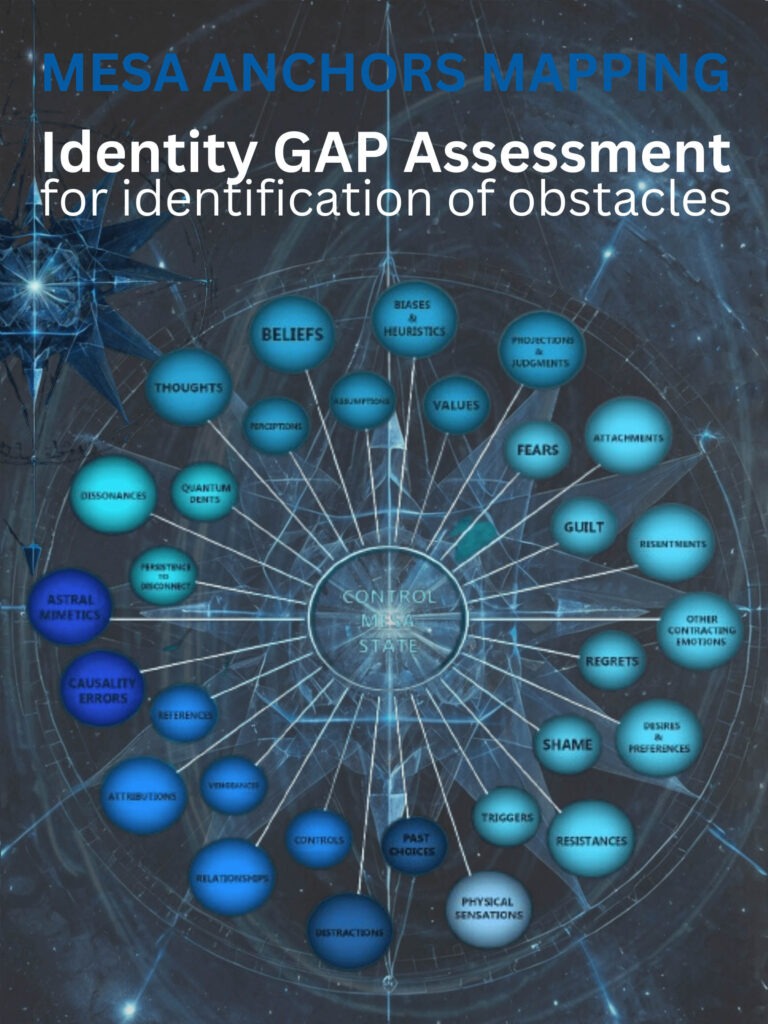There’s a tempting idea (common misconception) in alternative healing circles—the notion that pinpointing one trauma or a “limiting belief” will neatly resolve a specific illness. Chronic shoulder pain? Must be the weight of responsibility. Liver issues? Clearly unresolved anger. It’s tidy, but it’s not how human creatures work.
Our physiology and psychology aren’t isolated puzzle pieces waiting to be matched. They’re more like overlapping stories, tangled in ways that rarely make sense at first glance. Reducing complex health issues to a single cause is like blaming a symphony’s discord on one rogue violin—it misses the point entirely.
Healing doesn’t come from isolating one culprit but from seeing the whole mess for what it is—a myriad of influences. All within that which constitutes “a person” is interconnected in complex ways, making it unlikely that one cause directly correlates with one dysfunction.
The reductionist perspective disregards the inherently systemic nature of human health. Rather than isolating a single cause, effective healing requires examining the multi-layered and multi-dimensional interactions that shape health outcomes.
One Trauma, One Illness: The Problem with Isolated Causality:
A useful case study from a 2018 research project at the University of California explored the relationship between emotional trauma and physical illness. The study followed 150 patients diagnosed with autoimmune disorders and aimed to trace the origins of their conditions to singular traumatic events. Surprisingly, while 73% of participants reported significant trauma, their trauma profiles varied widely—ranging from childhood neglect to workplace stress. Even patients with similar diagnoses had vastly different emotional histories, demonstrating that no single trauma consistently correlated with one specific disorder.
Furthermore, the study revealed that addressing a single traumatic event, while beneficial for emotional relief, did not necessarily resolve the physical illness. This finding suggests that physical dysfunctions arise not from one isolated cause but from a dynamic web of influences, including psychological, physiological, and even social factors.
This idea is what I’ve been working with for the last two decades. For a while, I thought, “I wish it were that simple.”
Some clients would come in, and after just an hour of my work, their paralysis would be gone or ten years of clinical depression would vanish. But with others—not so easy.
Significant improvements would come fast, but sometimes it took quite a bit of poking around to get to the core and put all the pieces together.
Over time, all that poking around inspired me to create the MetaMind Bend Model for healing our bodies and mind. I’m truly delighted to introduce it to you–it’s completely turned my entire approach to working with the human body and mind upside down.
The Mesa Anchor Framework: A Systemic Perspective:
 To address this complexity, the Meta Mind Bend™ model introduces the concept of Mesa Anchors—stable points within an interconnected web of influences that sustain dysfunction. These anchors do not exist in isolation; they are part of a multi-layered and multi-dimensional system that shapes the body’s overall state.
To address this complexity, the Meta Mind Bend™ model introduces the concept of Mesa Anchors—stable points within an interconnected web of influences that sustain dysfunction. These anchors do not exist in isolation; they are part of a multi-layered and multi-dimensional system that shapes the body’s overall state.
For instance, consider chronic digestive issues. It is tempting to link them directly to unprocessed emotional experiences, like a traumatic betrayal or persistent anxiety. However, a deeper analysis reveals a more intricate picture:
- Emotional Layer: Chronic stress and suppressed emotions strain the gut-brain axis.
- Mental Layer: Rigid beliefs about vulnerability or control may exacerbate digestive tension.
- Physical Layer: Poor nutrition and sedentary behavior create physiological imbalances.
- Social Layer: Cultural norms that discourage expressing weakness can reinforce suppression.
- Energetic Layer: Disruptions in the body’s biofield may perpetuate imbalance.
And that’s not even the full analysis—in the MMB, we work with and systematically deconstruct a few dozen anchors.
Addressing only one of these factors often leads to temporary relief at best. Lasting resolution requires un-anchoring the interconnected influences and reconstructing healthy relationships between cognitive, emotional, physiological, bioenergetic, environmental, quantum etc. systems.
Organ Interdependence: One Dysfunction Affects the Whole System:
The idea that an illness can be traced to a single trauma becomes even less convincing when considering the interdependence of bodily organs. The human body functions as a network of interactions rather than isolated parts. Dysfunction in one organ inevitably affects others, creating cascading consequences throughout the system.
Case Example: Liver Dysfunction and Systemic Impact:
Liver dysfunction is commonly linked to unexpressed anger, but this interpretation alone is reductive. Dysfunction in the liver impairs detoxification, which increases oxidative stress and burdens the kidneys. Reduced liver function also affects glucose metabolism, impacting the pancreas and potentially leading to insulin resistance. Furthermore, compromised liver function often results in heightened inflammation, which may manifest as joint pain, cardiovascular issues, or cognitive fog. Therefore, attributing liver disease solely to unresolved anger overlooks the multi-dimensional reality where physical, emotional, and systemic interactions coexist.
Now, that is, of course, if we take the conversation out of the metaphysical context and look only at ‘material’ level manifestations and influences.
If we get a bit more esoteric, we could, for example, say that an event that occurred three generations ago affected the liver, and it also influenced an event in the future (ten years from now) where kidney malfunction had to manifest. I know, it might all sound confusing if you believe in linear time and don’t yet realize that reality is a timeless “happening” and “appearing”.
Empirical Insights: Beyond the Mind-Body Split:
An intriguing study published in Psychosomatic Medicine (2020) examined how multi-dimensional healing approaches impacted chronic illness recovery rates. The study tracked 220 patients diagnosed with chronic fatigue syndrome (CFS) and divided them into two groups: one receiving conventional symptom-focused therapy and the other engaging in systemic healing targeting emotional, mental, and physical layers simultaneously.
After one year, the systemic healing group demonstrated a 64% improvement in energy levels and cognitive clarity, compared to only 28% in the conventional therapy group. These results highlight the effectiveness of multi-layered interventions rather than isolated treatments.
And that is based on the fact that what was considered “multi-layered” for the purpose of this study is truly only a few surface levels—emotional, mental, and physical layers. In the MMB system, that would cover probably only 7 anchors out of approximately 30 we are working with today (and the system is still maturing).
The Need for Multi-Dimensional Healing Protocols:
If we continue to view healing through a linear, one-cause-one-effect lens, we risk perpetuating fragmented and ineffective treatment strategies. Instead, systematic multi-dimensional healing acknowledges the intricate network of influences that sustain dysfunction and consciously addresses each layer.
Key Principles of Multi-Dimensional Healing:
- Identify Multiple Layers: Explore emotional, mental, physical, social, energetic and other contributors.
- Map Interconnections: Understand how one dysfunction influences many others and vice versa, creating multiple feedback loops.
- Un-Anchor Patterns: Disentangle fixed beliefs, rigid emotions, habitual behavior, energetic nodes, false causality and timeline perceptions etc. that maintain dysfunction.
- Reconstruct Coherence: Foster harmonious interaction among physical organs and mental-emotional states.
From Fragmented to Integrated Healing:
Because human health is far too complex to be adequately addressed by isolated interventions targeting singular traumas or beliefs, the Meta Mind Bend™ Model’s systemic multi-dimensional approach recognizes the interconnected reality of bodily and psychological functions, creating a framework for holistic, lasting change.
Rather than succumbing to the simplistic logic of “one trauma equals one illness,” we must embrace the dynamic interplay of multiple Mesa Anchors that shape health outcomes. Only then can we move beyond symptomatic relief and achieve comprehensive, resilient well-being, and catalyze awakening of the mind and activation of the dormant potential of a human creature.
Meta Mind Bend™ (MMB) Approach: A Radical Departure from Traditional and Alternative Healing:
So, as we have established, the Meta Mind Bend™ (MMB) Model fundamentally redefines how we approach healing by moving beyond the layered limitations of both traditional and alternative methods. While conventional medicine often isolates the physical aspects of illness—targeting symptoms with pharmaceuticals or surgical interventions—many alternative healing methods frequently focus on a singular emotional or energetic cause. Both approaches suffer from a reductionist mindset, each addressing just one aspect of the complex system that sustains what is perceived to be a dysfunction.
Traditional medical approaches tend to compartmentalize health issues, isolating symptoms from their broader context. For instance:
- Example: A patient with chronic migraines may receive pain relievers and beta-blockers to manage symptoms. Neurological exams might identify triggers, but the underlying psycho-emotional, environmental, energetic, social etc. factors remain unaddressed.
- Limitation: This approach treats the manifestation of dysfunction while leaving the root systemic cause intact.
Alternative therapies often take the opposite approach—attempting to locate a single trauma, belief, or energetic blockage that supposedly underlies an illness. Examples include:
- Emotional Release Therapy: Focusing solely on emotionally processing past trauma without addressing cognitive distortions, physiological imbalances etc..
- Energy Healing Practices: Balancing the biofield without confronting the cognitive and behavioral patterns that maintain dysfunction.
- Mind-Body Techniques: Using mindfulness or meditation to relieve stress but neglecting social or nutritional factors that perpetuate tension.
Limitation: All these methods often assume a linear causality, which fails to account for the complex feedback loops inherent in human physiology and psychology.
MMB’s Systematic Multi-Layered Multi-Dimensional Approach to Healing:
I struggled with such a partial approach and was looking to create a system that uniquely transcends these limitations by integrating ALL relevant dimensions into a coherent healing process. It recognizes that dysfunction is sustained by a complete set of interdependent Mesa Anchors.
(IMAGE)
Instead of isolating one layer, MMB systematically unearths all contributing factors to create a multi-dimensional Mesa Anchor Map for a dysfunction. The process then involves un-anchoring the dominant patterns and reconstructing harmonious interactions among all layers.
Case Example: Integrating Layers for Lasting Resolution:
Consider a client presenting with chronic fatigue and digestive issues:
- Traditional Approach: Prescribes medications to manage symptoms, such as antidepressants, for example.
- Some Alternative Approaches: Identifies stress or childhood trauma as the primary cause and focuses on stress management or trauma release.
- MMB Approach: Examines how chronic stress impacts digestive enzyme production, how emotional suppression compromises the vagus nerve function, how rigid beliefs about self-worth perpetuate anxiety, and how social isolation contributes to bioenergetic stagnation, and the list goes on for 30 variants and co-influences.
How MMB Stands Apart as a System for Self-Healing:
- Comprehensive Mapping: Instead of targeting symptoms or single causes, MMB creates a multi-dimensional map to reveal all interconnected influences.
- Un-Anchoring Dynamics: Rather than simply soothing symptoms or releasing isolated traumas, MMB uses multiple processes to systematically un-anchors dominant patterns that sustain dysfunction.
- Reconstructive Healing: The model fosters reconstructive coherence between layers, ensuring that change in one domain does not trigger compensatory dysfunction elsewhere.
- Adaptability: Unlike traditional medicine that follows a protocol or even some alternative healing that adheres to dogma, MMB adapts to the unique configuration of each individual, allowing for context-sensitive interventions.
A New Paradigm of Self-Healing:
The MMB model challenges the entrenched belief that health can be restored by addressing one factor at a time. It recognizes that life itself operates as a complex, dynamic system, where human health is sustained by networks of interrelated anchors. By addressing these networks holistically, MMB not only resolves existing dysfunctions but also fortifies resilience against future disturbances.
Through systematic un-anchoring and multi-dimensional reconstruction, MMB provides a genuinely transformative healing process—one that honors the complexity of the human experience rather than reducing it to simplistic, linear equations.










